
Types of Sake and How to Read Their Labels
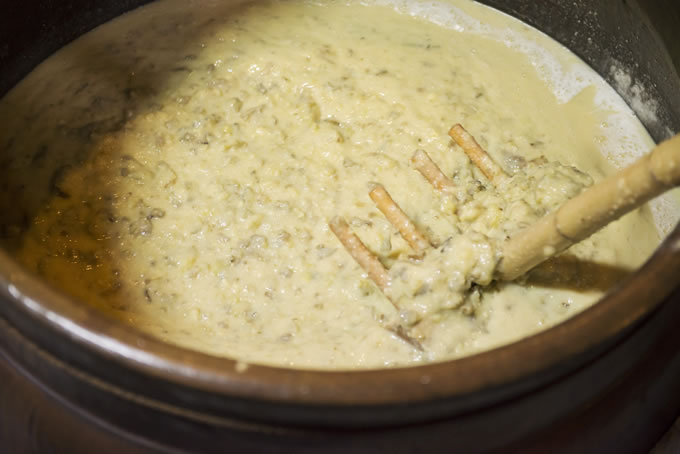

Depending on the ingredients used, sake can be divided into 2 main categories: "Junmai-Shu" and "Honjozo-Shu". The first term refers to pure Sake made without additional sugar or alcohol, and the second one indicates Sake brewed without any added saccharides and a seeded alcohol content of no more than 120 liters per ton of raw material. Within these categories, specific designations are determined by the ratio of polished white to brown rice used in production. Although each one has its own characteristic taste, the name doesn't determine its value and ranking.
This number expresses how much of the rice grain is left after the outer layer has been removed. For example, if the "Seimai-buai" is 60%, 40% of the rice bran has been milled away. The core of a rice grain is the whitest part. It is an almost pure starch. Using this white part of the rice will create a less-bitter Sake.
The term "Ginjo" means brewing Sake under careful scrutiny. Traditionally, it indicated polished white rice brewed at low temperatures during fermentation, leaving a high proportion of Sake lees. This method of brewing is said to impart a characteristically fragrant, fruity aroma to the Sake.
| "Tokutei-Meisho": Types of Specifically Designated Sake | The Ingredients Used | Degree of Rice Grain Polishing | Necessary Conditions |
|---|---|---|---|
| Junmai Daiginjo-Shu | Rice, rice "Koji" ferment | Less Than 50% |
Ginjo-Zukuri、a Characteristic Flavor; A Particularly Favorable Color and Luster |
| Junmai Ginjo-Shu | Less Than 60% |
Ginjo-Zukuri、a Characteristic Flavor; A Particularly Favorable Color and Luster | |
| Tokubetsu Junmai-Shu | Less Than 60% or Special Production Methods |
A Flavor; A Particularly Favorable Color and Luster | |
| Junmai-Shu | - | A Flavor; A Favorable Color and Luster |
| "Tokutei-Meisho": Types of Specifically Designated Sake | The Ingredients Used | Degree of Rice Grain Polishing | Necessary Conditions |
|---|---|---|---|
| Daiginjo-Shu | Rice, rice "Koji" ferment, "Jozo" alcohol | Less Than 50% |
Ginjo-Zukuri、a Characteristic Flavor; A Particularly Favorable Color and Luster |
| Ginjo-Shu | Less Than 60% |
Ginjo-Zukuri、a Characteristic Flavor; A Particularly Favorable Color and Luster | |
| Tokubetsu Honjozo-Shu | Less Than 60% or Special Production Methods |
A Flavor; A Particularly Favorable Color and Luster | |
| Honjozo-Shu | Less Than 70% |
A Flavor; A Favorable Color and Luster |
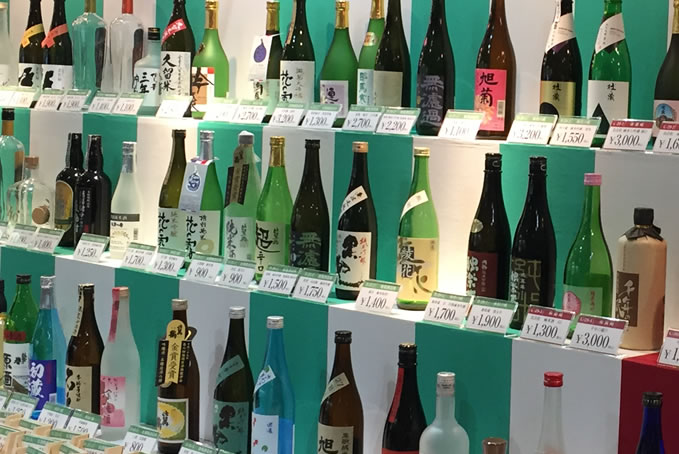
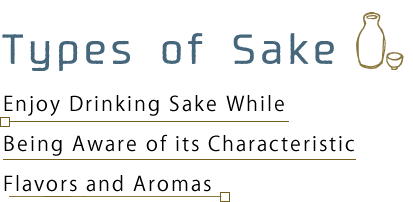
Sake can be divided into 4 main types. Although the ingredients are simply water and rice, complex flavors can be expressed, depending on the method of production. By keeping in mind the main tendencies of these 4 types, the world of Sake tasting will open up to you!
This is a fragrant and fruity type of Sake.
Daiginjo or Ginjo types
This is a matured or aged Sake.
Jukusei-Shu or Koshu types
This is a light and refreshing type of Sake.
Futsu-Shu (table sake), Honjozo and Namazake (unpasteurized) types
This is a full-bodied type of Sake.
Junmai-Shu types
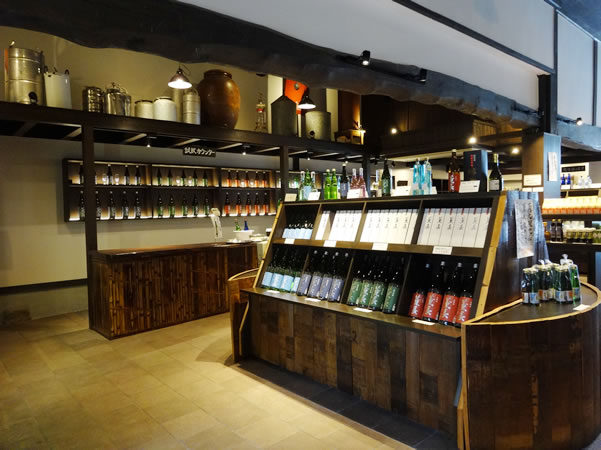
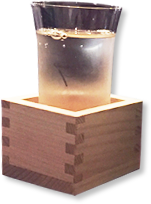

There are various names for Sake, depending on slight differences in the manufacturing process and aging period. Sake lovers should become familiar with the wide variety of Sake names, including Genshu, Namazake, Nigorizake, and more. When visiting a Sake brewery, you might be lucky enough to sample some types that are not yet on the market!
In general, Sake sold on the market has been diluted with water. However, Genshu, or undiluted Sake, uses alcohol instead, with a high percentage ranging from 18 to 20%. It's pasteurized.
This is unpasteurized Sake, which hasn't been heated even once during the production process. It's fresh Sake, served "as is".
Usually, Sake is heated twice after pressing before bottling, but this Sake is pasteurized only once prior to storage in a cellar. It leaves a fresh taste.
Sake is usually pasteurized two times prior to bottling, but this type is heated only once, and not before bottling. Just the right amount of heat results in a stable quality.
This "first run" refers to the white, unrefined Sake that seeps from the fermenting rice mash before pressing. It's a fragrant, low-alcohol Sake with a slightly carbonated acidity.
Meaning the "middle pressing", this is what comes out after the Arabashiri has been pressed. This Sake isn't cloudy, leaving less of a bitter off-flavor. Featuring a stable flavor balance, this type of Sake is often exhibited at tasting competitions.
This is a Sake that has been coarsely filtered through a roughly woven cloth. Leaving tiny bits of rice inside, you can taste the "umami" of the ingredients when you drink it. Since many Nigori Sakes are unpasteurized, they may be bottled with live yeast, making fizziness one of their characteristics.
Sake is usually matured in storage for a year, but if it is aged for 2-3 years, the taste will become smoother and deeper. This is called Choki-Chozoshu, and if the sake is aged for 5 or more years, it becomes a valuable Koshu.
This usually refers to the "new sake" that has just been released by a brewery this year.
After pasteurizing only once, this Sake is stored in a cellar over the summer, then bottled and shipped in the fall without heating it again.
Using the power of nature, this is a method of making Sake handed down from long ago. Naturally developing lactic-acid bacilli is increased by the yeast in this Sake.
Stored in wooden casks, this Sake features a rich, distinctive flavor coming from the aroma of the wood. The Sake stored in cedar or old-growth cedar wooden barrels is the most highly valued.
This is what Sake is called when some of the water used to make it is replaced with other Sake. Featuring a sweet and rich viscosity, this Sake has been highly prized since ancient times.
This is Sake that has been frozen in special containers to make a sherbet.
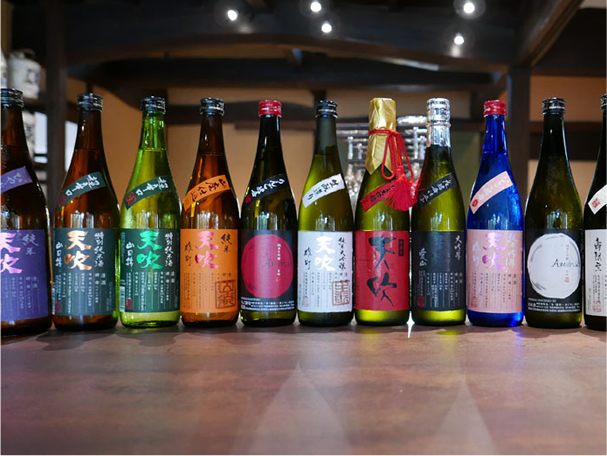

Sake labels are filled with information regarding the particular ingredients or methods of production that the manufacturer uses. Once you understand how to read the labels, choosing a sake to drink at home or to give as a gift will be a lot more fun!
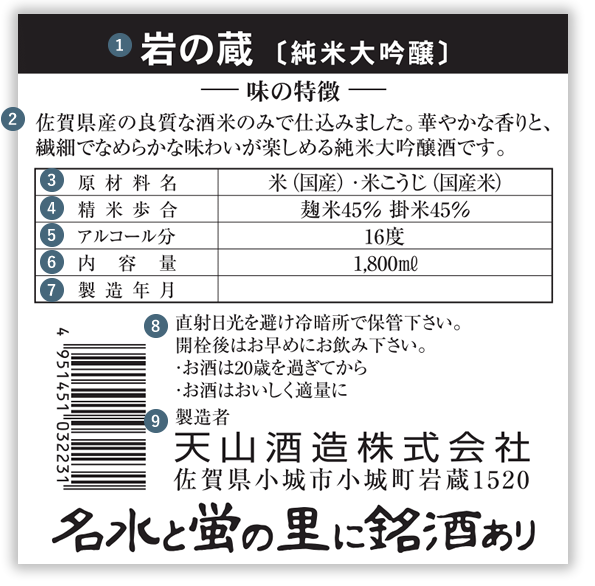
This is where you can discover the brewer's way of thinking about Sake.
Ingredients are listed in descending order of volume or amount. If rice comprises over 50% of volume, the variety of rice will also be listed.
Only written for "Tokutei-Meisho", or specifically designated Sake, this expresses the degree of rice grain polishing done before making Sake.
In general, Sake has an alcohol content of 15-16%. Genshu (undiluted Sake) is higher, with Junmai at 18% and some Honzojo Sakes reach 20%.
Basically, Sake is bottled in a standard unit of 180 ml called "Ichi-Go". However, in recent years, small bottles of 300 or 720 ml have become popular in Sake circles.
This indicates when the product was shipped out from the brewery. Depending on the brewery, the date of bottling and the expiration date will also be written.
